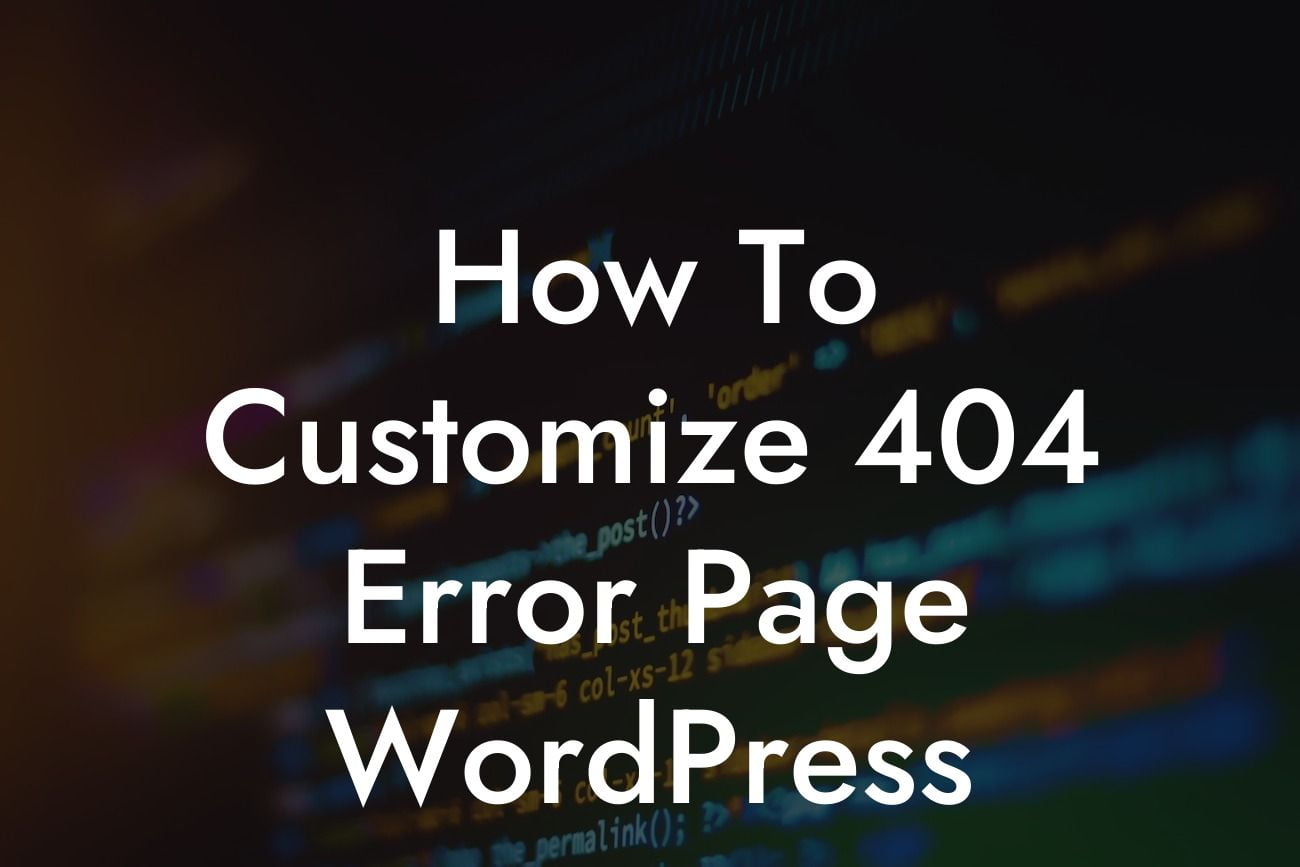A website's 404 error page is often an overlooked aspect of web design. However, it presents a valuable opportunity to engage your visitors, maintain their interest, and enhance their overall user experience. In this article, we will guide you through the process of customizing your 404 error page in WordPress. By following our step-by-step instructions and incorporating practical tips, you can transform this common dead-end into a memorable and engaging experience for your website users.
H2 Heading: Understanding the Importance of a Customized 404 Error Page
The first step in enhancing your website's 404 error page is recognizing its significance. When a visitor encounters a broken link or a page that doesn't exist, they are typically greeted with a generic and unhelpful message. This can lead to frustration, causing them to leave your site. However, by customizing the 404 error page, you can turn this problem into an opportunity to redirect users, foster brand loyalty, and provide helpful information.
H3 Heading: Step 1 - Identifying the Default 404 Error Page in WordPress
Before customizing your 404 error page, it's essential to understand its default appearance. Typically, WordPress themes include a basic template for handling 404 errors. By locating this default template, you can identify the file you need to customize to create a more engaging experience for your visitors.
Looking For a Custom QuickBook Integration?
H3 Heading: Step 2 - Creating a Customized 404 Error Page Template
To begin customizing your 404 error page, you'll need to create a new template file within your WordPress theme's directory. This file will act as the blueprint for your unique and engaging 404 page. We'll provide detailed instructions on how to create this template, including the necessary HTML markup and CSS styling.
H3 Heading: Step 3 - Adding Relevant Elements and Branding
Once you have your custom template file in place, it's time to enhance your 404 error page with relevant elements and branding. This section will walk you through the different elements you can add to your page, such as a search bar, popular blog post links, or a contact form. Additionally, we'll provide tips on incorporating your brand's visual identity to reinforce recognition and trust.
How To Customize 404 Error Page Wordpress Example:
To help you visualize the transformation of a default 404 error page into a customized and engaging version, let's consider a fictional example. Imagine you have a business website selling handmade jewelry. Your customized 404 error page could feature a visually appealing design with a message like "Oh no! You've discovered our secret treasure chest! While this page doesn't exist, why not explore some of our popular pieces below?" You could then include links to your best-selling products or even offer a discount code to keep visitors engaged.
Congratulations! You've learned how to craft a customized and engaging 404 error page in WordPress. By implementing the steps and tips we've provided, you can ensure that when visitors stumble upon broken links, they are tempted to stay, explore more of your content, and potentially convert into loyal customers. Don't forget to share this article with others who can benefit from enhancing their website's user experience. Explore other guides available on DamnWoo and take your website to the next level with our awesome WordPress plugins.













